In Virginia, a kaleidoscope of vibrant hues graces the skies as ten distinct hummingbird species navigate diverse ecosystems.
These tiny avian marvels, each with its unique characteristics, contribute to the region’s rich biodiversity.
From the iconic Ruby-throated to the rare Rivoli’s, these winged gems play crucial roles in pollination, plant reproduction, and maintaining ecological balance.
Join us on a journey into the enchanting world of hummingbirds in Virginia, where their delicate presence paints a vivid portrait of nature’s beauty and intricacies.
This exploration unveils the identities, behaviors, and ecological significance of these ten captivating hummingbird species that call Virginia home. Stay sharp.
10 Hummingbirds In Virginia
Jump into the avian world as we explore the enchanting hummingbirds gracing the skies of Virginia. From the iconic Ruby-throated to the rare Rivoli’s, each bird presents a unique tapestry of colors and behaviors.
Discover the fascinating lives of these delicate creatures in this curated list of hummingbirds in Virginia.
1. Ruby-throated Hummingbird
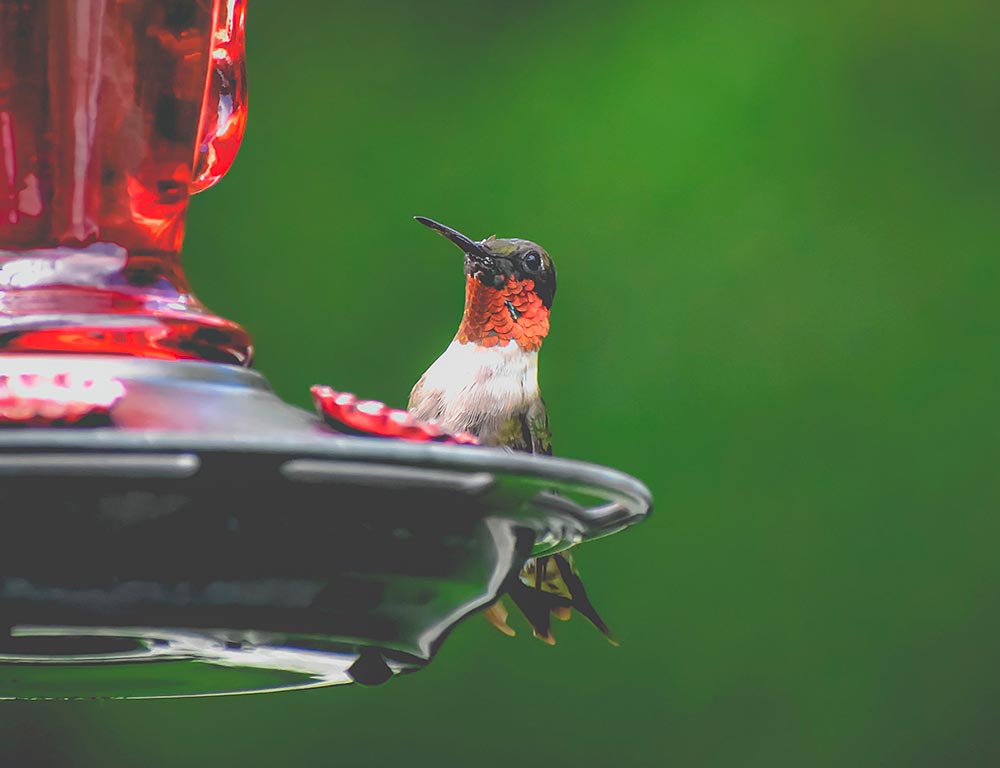
- Scientific Name: Archilochus colubris
- Population: Common, especially during migration.
- Life Span: 3 to 5 years.
- Size: 3 to 3.5 inches.
- Weight: 2 to 20 grams.
- Food: Nectar from flowers, insects, and spiders.
- Wingspan: 3.1 to 4.3 inches.
The Ruby-throated Hummingbird is the only species of hummingbird that breeds in eastern North America and is a common visitor to Virginia.
These tiny birds are known for their vibrant green plumage; as the name suggests, the males have a brilliant ruby-red throat.
They are highly territorial and can be observed vigorously defending their feeding territories. Ruby-throated Hummingbirds are agile fliers, capable of hovering in mid-air and even flying backward.
Their remarkable migration covers up to 18 hours of non-stop flight across the Gulf of Mexico. They primarily feed on nectar but also consume insects and spiders, providing essential proteins for their diet.
Despite their small size, Ruby-throated Hummingbirds have an impressive memory, remembering every flower and feeder they have visited.
2. Rufous Hummingbird
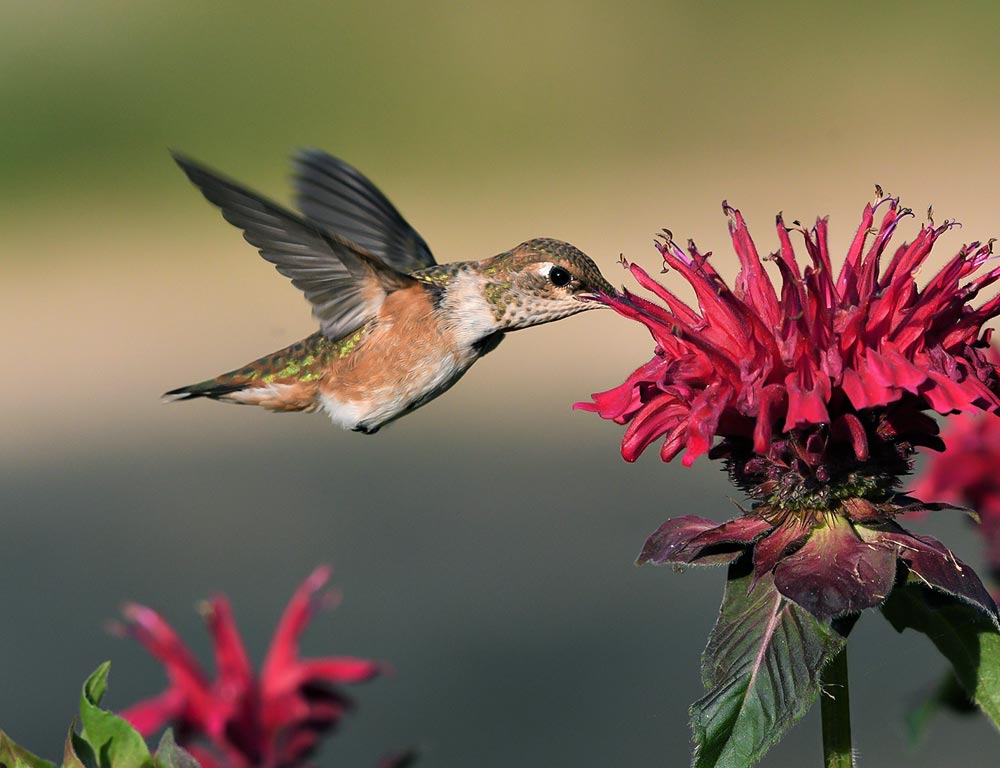
- Scientific Name: Selasphorus rufus
- Population: Common during migration, uncommon during breeding.
- Life Span: 3 to 5 years.
- Size: 2.8 to 3.5 inches.
- Weight: 2 to 20 grams.
- Food: Nectar, insects, and spiders.
- Wingspan: 4 to 4.3 inches.
The Rufous Hummingbird is a visitor to Virginia during migration, often seen in gardens and woodlands. They are characterized by their rufous (reddish-brown) plumage, and males have a vibrant orange-red throat.
Rufous Hummingbirds are highly aggressive and defend their territories fiercely. During migration, they cover long distances, sometimes from Alaska to Mexico, and are known for their tenacity.
These hummingbirds have a broad diet, feeding on nectar, insects, and spiders. They can have rapid and agile flight, and their long migrations showcase their remarkable endurance.
3. Black-chinned Hummingbird
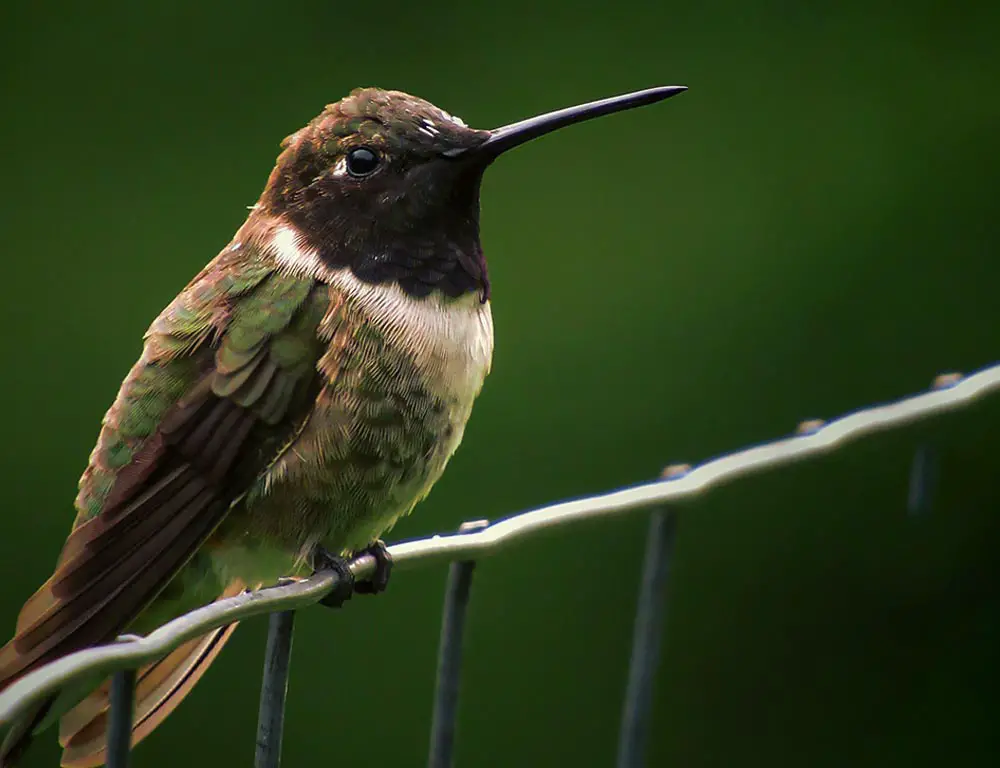
- Scientific Name: Archilochus alexandri
- Population: Uncommon, occasional visitor.
- Life Span: 3 to 5 years.
- Size: 3.25 to 4 inches.
- Weight: 2 to 5.5 grams.
- Food: Nectar, insects, spiders.
- Wingspan: 4 to 5 inches.
The Black-chinned Hummingbird is a less common visitor to Virginia, occasionally spotted during migration.
They are known for their iridescent green plumage and a black chin patch on males. These hummingbirds are more subdued and less aggressive than some other species.
Black-chinned Hummingbirds feed on nectar from a variety of flowers, as well as insects and spiders. Their migratory routes often cover long distances, showcasing their endurance in flight.
Though less conspicuous than other hummingbirds, their subtle beauty and unique behaviors make them a fascinating sight for bird enthusiasts in Virginia.
4. Anna’s Hummingbird
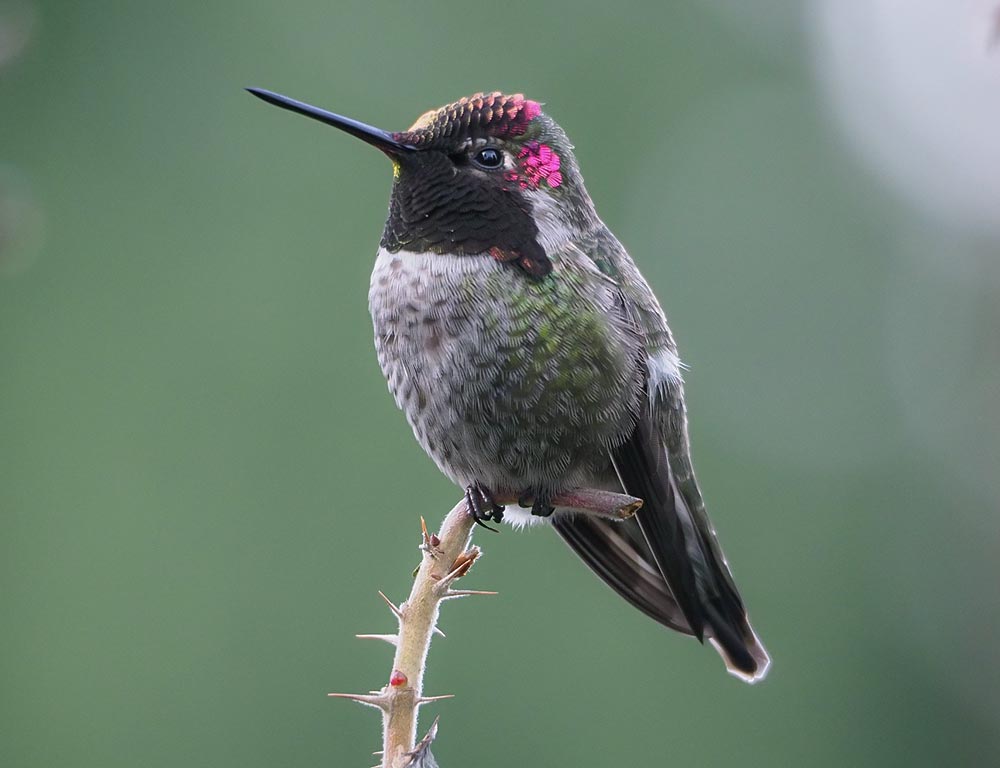
- Scientific Name: Calypte anna
- Population: Resident and common in some regions.
- Life Span: 3 to 5 years.
- Size: 3.9 to 4.7 inches.
- Weight: 3 to 6 grams.
- Food: Nectar, insects.
- Wingspan: 4.7 to 5.1 inches.
Anna’s Hummingbird is a year-round resident in some parts of Virginia. Males are known for their vibrant rose-red throats and crowns. They are territorial and known for their acrobatic displays during courtship.
These hummingbirds are adaptable and can be found in various habitats, from coastal areas to urban gardens.
Anna’s Hummingbirds feed on nectar from a diverse range of flowers and also consume small insects and spiders for protein.
They are known for their resilience, with some populations being able to withstand colder temperatures than other hummingbird species. Their distinctive vocalizations, including chirps and whistles, add to their charm.
5. Calliope Hummingbird
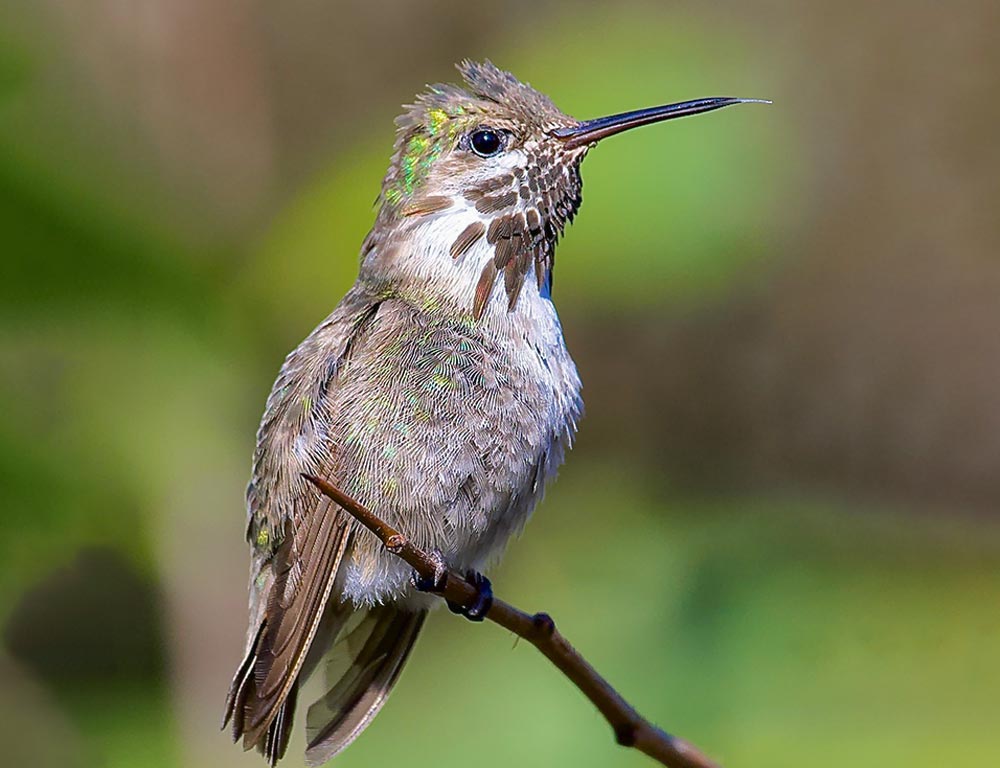
- Scientific Name: Selasphorus calliope
- Population: Uncommon, occasional migrant.
- Life Span: 3 to 5 years.
- Size: 2.8 to 3.1 inches.
- Weight: 1.6 to 3.4 grams.
- Food: Nectar, insects.
- Wingspan: 3.1 to 3.4 inches.
The Calliope Hummingbird is a relatively rare visitor to Virginia, often seen during migration. It is the smallest breeding bird in North America. Males are distinguished by their iridescent purple throat stripes.
Despite their small size, Calliope Hummingbirds are known for their long migratory journeys, traveling from their breeding grounds in the western United States to wintering areas in Mexico.
They feed on nectar from a variety of flowers and also capture insects in flight. Calliope Hummingbirds exhibit agility and endurance during their flights, making them an intriguing species for bird watchers lucky enough to spot them in Virginia.
6. Allen’s Hummingbird
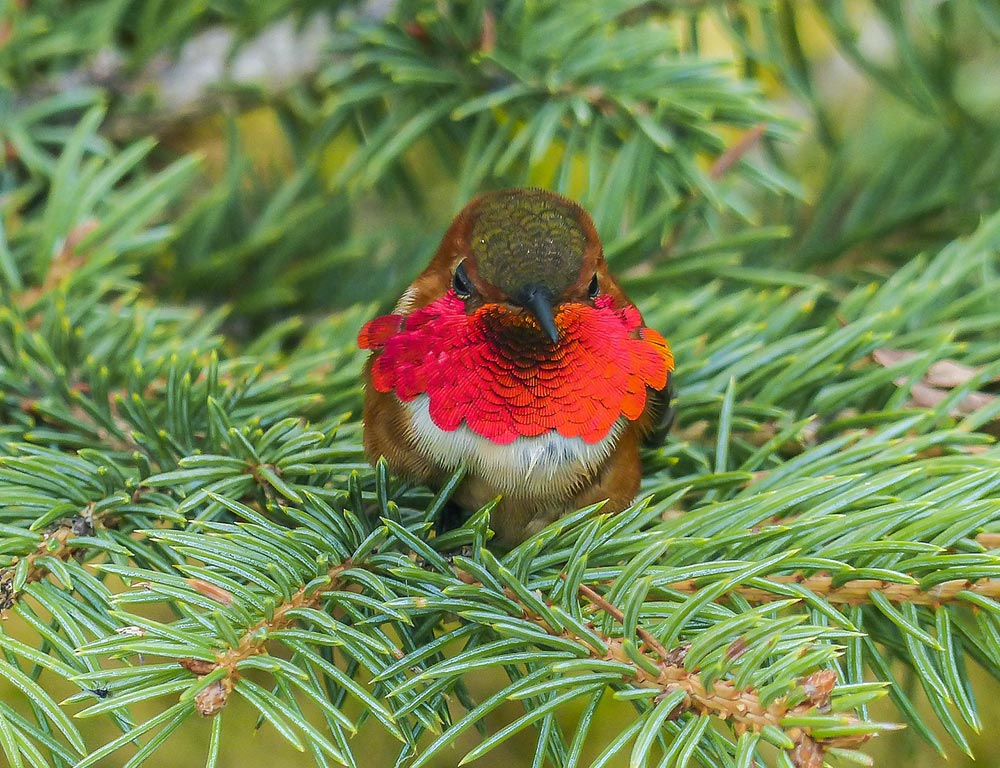
- Scientific Name: Selasphorus sasin
- Population: Uncommon, occasional winter visitor.
- Life Span: 3 to 5 years.
- Size: 3.5 to 4 inches.
- Weight: 2 to 4 grams.
- Food: Nectar, insects.
- Wingspan: 4 to 4.5 inches.
Allen’s Hummingbird is an occasional winter visitor to Virginia, migrating from its breeding grounds along the Pacific coast.
The males have a vibrant orange-red throat patch and are known for their aerial displays during courtship. They are territorial and can be aggressive in defending their feeding areas.
These hummingbirds feed on nectar from various flowers, favoring tubular-shaped blooms. Insects are also an essential part of their diet.
The winter visits to Virginia are part of their migration pattern, highlighting these small birds’ remarkable ability to navigate long distances.
Observing the Allen’s Hummingbird during its temporary stay in Virginia is a treat for bird enthusiasts.
7. Rivoli’s Hummingbird
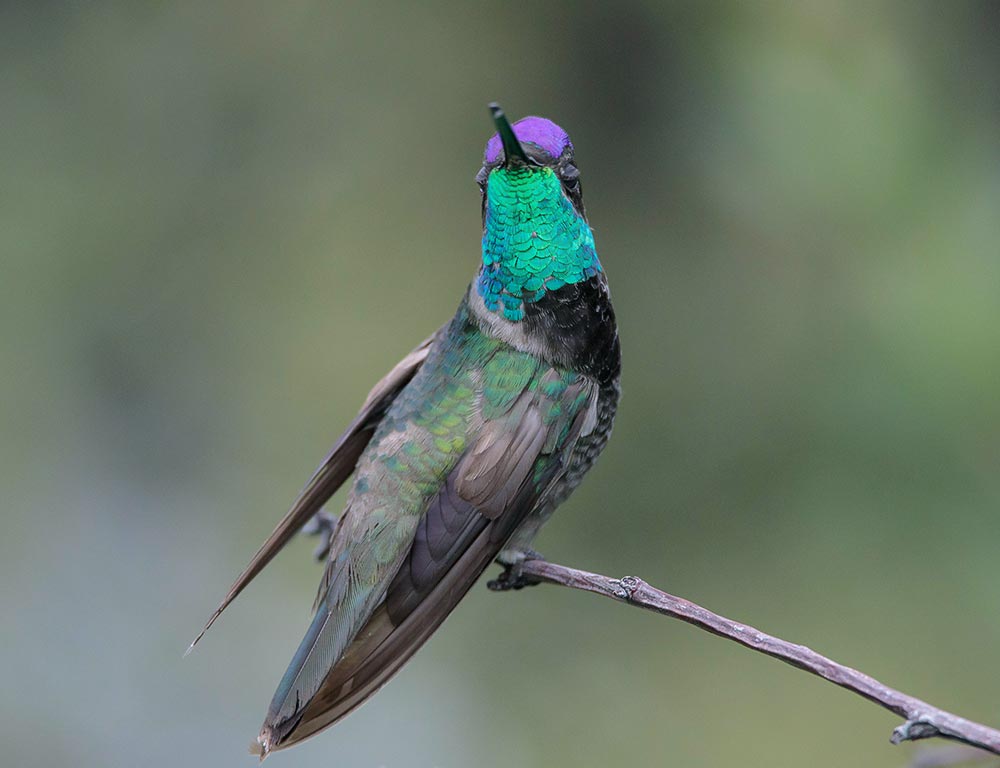
- Scientific Name: Eugenes fulgens
- Population: Resident in some regions, occasional visitor.
- Life Span: 3 to 5 years.
- Size: 4.3 to 5 inches.
- Weight: 7 to 10 grams.
- Food: Nectar, insects.
- Wingspan: Approximately 6 inches.
Rivoli’s Hummingbird, also known as the Magnificent Hummingbird, is native to western Mexico but is occasionally spotted as a rare visitor in parts of the United States, including Virginia.
Males exhibit striking iridescent green and blue plumage. They are territorial and known for their rapid and direct flight patterns.
Feeding primarily on nectar from various flowering plants, Rivoli’s Hummingbird supplements its diet with small insects and spiders.
The species’ relatively larger size among hummingbirds contributes to its unique presence. Spotting a Rivoli’s Hummingbird in Virginia is a rare and exciting event for birdwatchers.
8. Buff-bellied Hummingbird
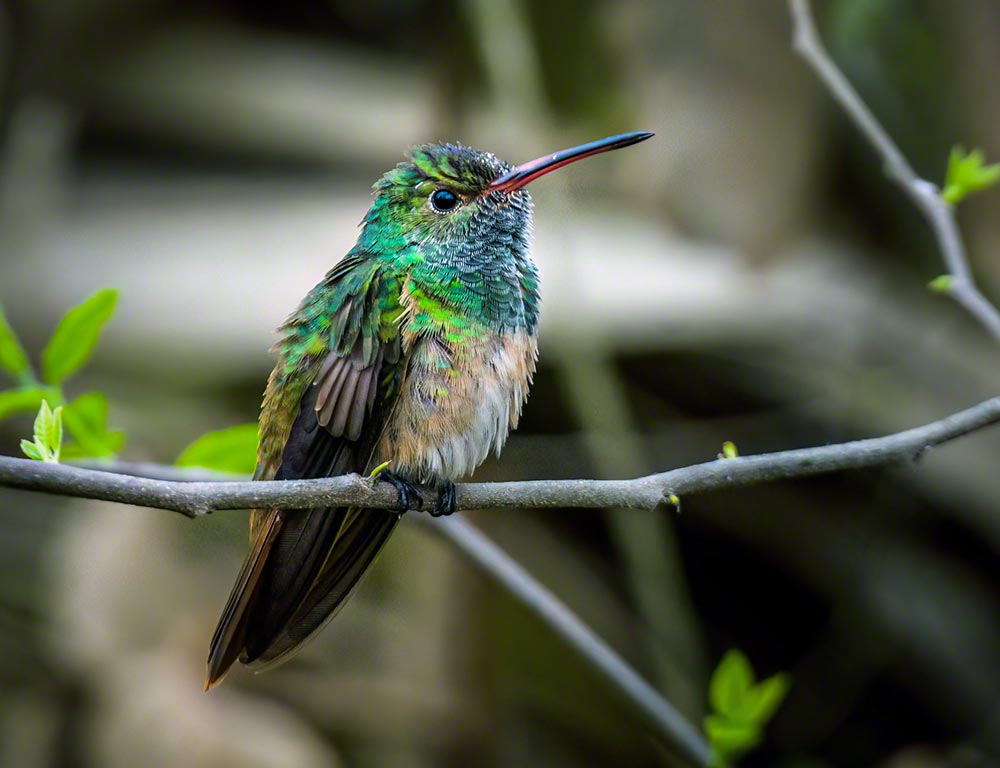
- Scientific Name: Amazilia yucatanensis
- Population: Uncommon, occasional visitor.
- Life Span: 3 to 5 years.
- Size: 3.5 to 4 inches.
- Weight: 7 to 10 grams.
- Food: Nectar, insects.
- Wingspan: 4 to 4.3 inches.
The Buff-bellied Hummingbird is a rare visitor to Virginia, with its primary range extending from Mexico to the southern United States.
Males are characterized by their iridescent green plumage and buff-colored belly. They are known for their acrobatic flight and agility during feeding.
Feeding primarily on nectar, Buff-bellied Hummingbirds are attracted to various flowers with tubular shapes.
They also consume small insects and spiders for essential proteins. Their visits to Virginia are sporadic, making sightings a special occasion for bird enthusiasts in the region.
9. Violet-crowned Hummingbird
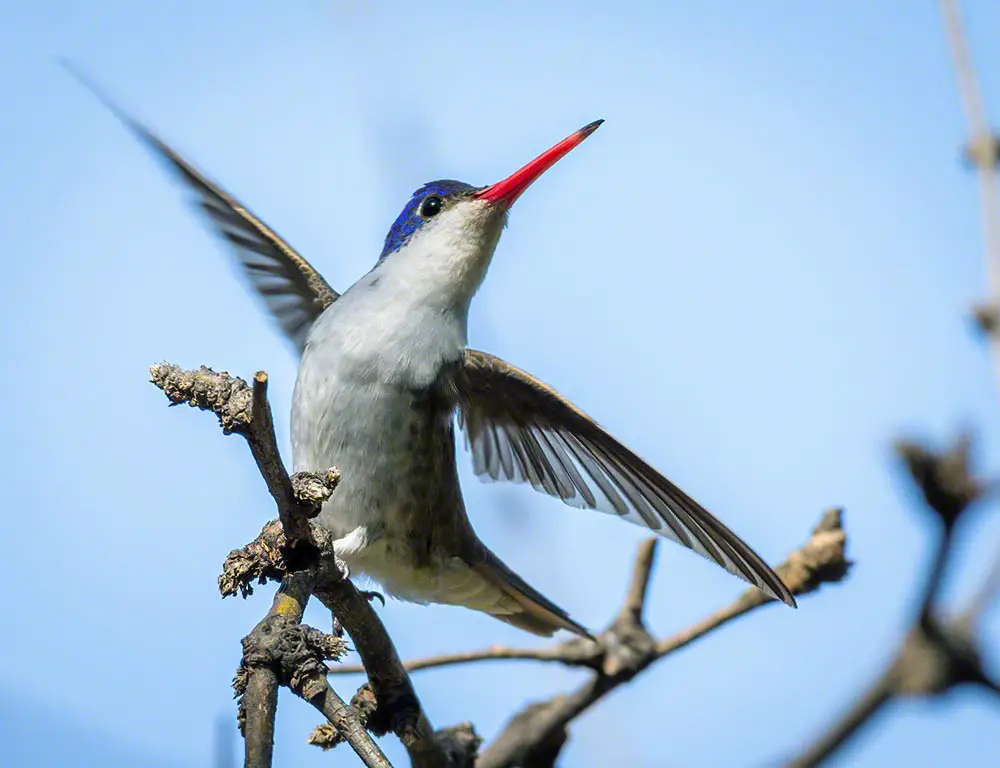
- Scientific Name: Amazilia violiceps
- Population: Uncommon, occasional visitor.
- Life Span: 3 to 5 years.
- Size: 4 to 4.5 inches.
- Weight: 7 to 10 grams.
- Food: Nectar, insects.
- Wingspan: 4.5 to 5 inches.
The Violet-crowned Hummingbird is a rare visitor to Virginia, primarily found in the southwestern United States and Mexico.
Males display vibrant violet feathers on their crown, throat, and chest. They are known for their territorial behavior, defending feeding areas vigorously.
Feeding on nectar from various flowers, Violet-crowned Hummingbirds also catch insects and spiders in flight.
Their striking plumage and unique coloration make them an exciting find for birdwatchers lucky enough to spot them during their occasional visits to Virginia.
The species’ uncommon presence adds to the diversity of hummingbird species that may be observed in the region.
10. Selasphorus platycercus

- Common Name: Broad-tailed Hummingbird
- Scientific Name: Selasphorus platycercus
- Population: Common in western North America.
- Life Span: 3 to 5 years.
- Size: 3.1 to 3.5 inches.
- Weight: 3 to 6 grams.
- Food: Nectar, insects.
- Wingspan: 4.3 to 4.7 inches.
The Broad-tailed Hummingbird is a common species in the western parts of North America, and while it’s not a regular visitor to Virginia, it has been occasionally recorded during migration.
Males are characterized by their iridescent green plumage and a distinctive, buzzy trill produced by their wings during flight.
These hummingbirds are known for their remarkable migratory feats, traveling long distances between their breeding grounds in the western United States and their wintering areas in Mexico and Central America.
They are territorial during the breeding season, engaging in aerial displays to establish and defend their territories.
Broad-tailed Hummingbirds primarily feed on nectar from various flowers, favoring those with tubular shapes. In addition to nectar, they consume small insects and spiders, providing essential proteins for their diet.
Their ability to cover vast distances during migration and their acrobatic flight displays make them a fascinating species for bird enthusiasts.
Ecological Significances of Hummingbirds In Virginia
In Virginia’s ecosystems, hummingbirds emerge as charismatic avian ambassadors, playing vital roles that extend beyond their enchanting appearances.
These tiny wonders contribute significantly to the ecological balance, offering essential services that ripple through the natural tapestry. Let’s delve into the ecological significance of hummingbirds in Virginia.
Pollination Prowess
Hummingbirds are adept pollinators, transferring pollen from one flower to another as they feed on nectar.
This unique relationship fosters plant reproduction, supporting biodiversity and ensuring the health of various plant species across Virginia’s landscapes.
Floral Diversity and Adaptation
The foraging behavior of hummingbirds influences the types of flowers that thrive in an area.
Their long bills and specialized tongues allow them to access nectar from tubular blooms, promoting the evolution of specific flower shapes and structures to cater to their feeding preferences.
Insect Control
Beyond being nectar enthusiasts, hummingbirds supplement their diet with insects and spiders.
This insectivorous behavior aids in controlling insect populations, contributing to ecological balance and preventing the proliferation of certain pest species.
Seed Dispersal
Hummingbirds inadvertently contribute to seed dispersal by transporting pollen between flowers.
As they visit different plants, they play a crucial role in genetic exchange and the creation of diverse plant populations, ultimately influencing the composition and structure of ecosystems in Virginia.
Ecosystem Resilience
The presence of hummingbirds in Virginia indicates a healthy and balanced ecosystem. Their adaptability to diverse habitats reflects the overall well-being of the environment.
Monitoring these tiny travelers can serve as an ecological indicator, providing insights into the overall health and resilience of ecosystems in the region.
Educational Value
Hummingbirds capture the imagination of nature enthusiasts and scientists alike. Their study provides valuable insights into avian behavior, migratory patterns, and ecological interdependencies.
Educational programs focused on hummingbirds foster a deeper understanding of biodiversity, conservation, and the delicate web of life within Virginia’s ecosystems.
Wrapping Up
In the intricate ballet of Virginia’s ecosystems, hummingbirds emerge as unsung heroes, weaving threads of biodiversity, pollination, and ecological resilience.
Their vibrant presence adds aesthetic charm to the landscape and signifies a harmonious and thriving environment.
As we marvel at the iridescent hues and delicate dances of these winged wonders, let us appreciate the indispensable ecological roles played by hummingbirds in maintaining the balance of Virginia’s natural tapestry. Thank you for supporting us.